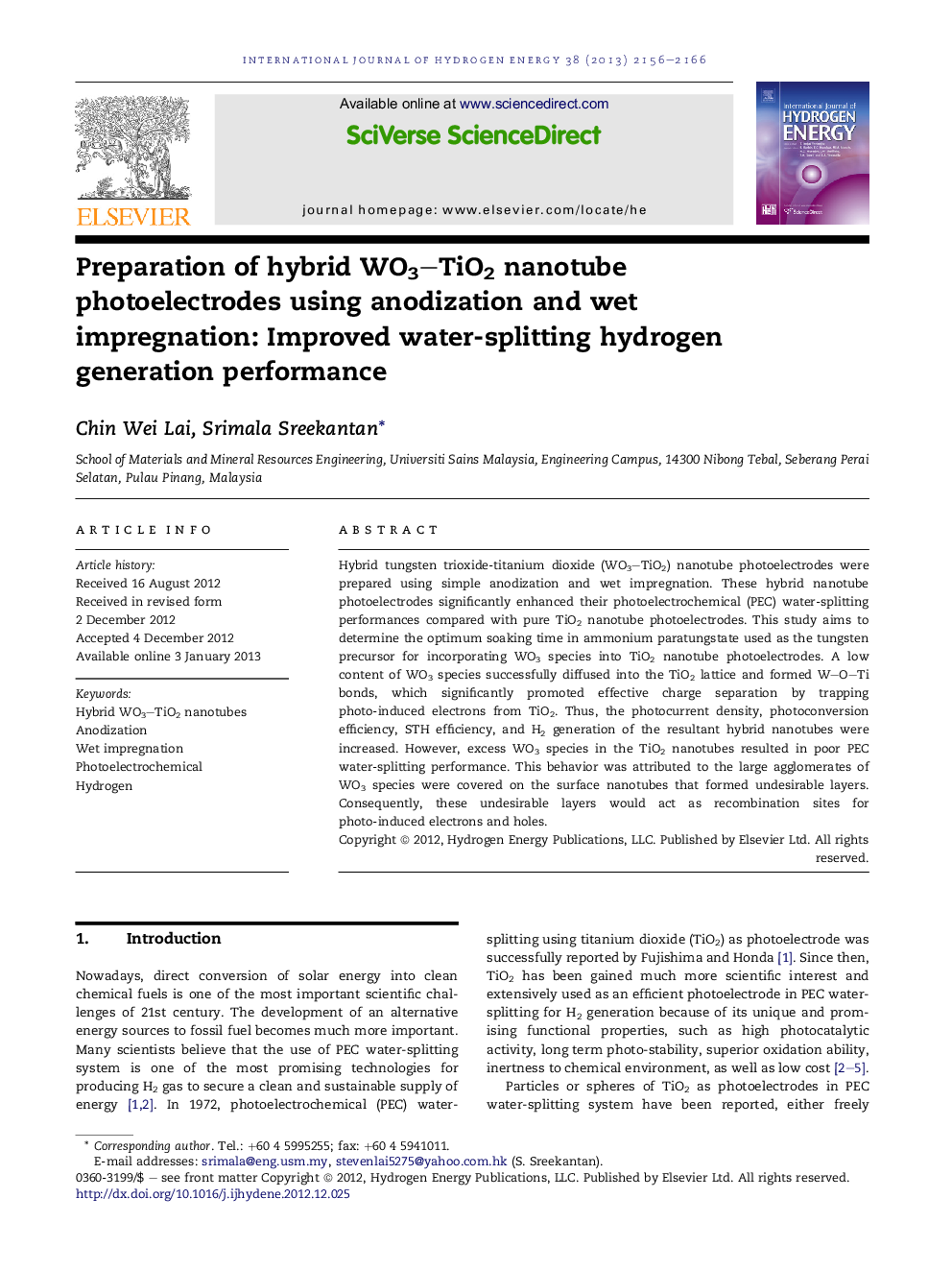| کد مقاله | کد نشریه | سال انتشار | مقاله انگلیسی | نسخه تمام متن |
|---|---|---|---|---|
| 1274078 | 1497540 | 2013 | 11 صفحه PDF | دانلود رایگان |

Hybrid tungsten trioxide-titanium dioxide (WO3–TiO2) nanotube photoelectrodes were prepared using simple anodization and wet impregnation. These hybrid nanotube photoelectrodes significantly enhanced their photoelectrochemical (PEC) water-splitting performances compared with pure TiO2 nanotube photoelectrodes. This study aims to determine the optimum soaking time in ammonium paratungstate used as the tungsten precursor for incorporating WO3 species into TiO2 nanotube photoelectrodes. A low content of WO3 species successfully diffused into the TiO2 lattice and formed W–O–Ti bonds, which significantly promoted effective charge separation by trapping photo-induced electrons from TiO2. Thus, the photocurrent density, photoconversion efficiency, STH efficiency, and H2 generation of the resultant hybrid nanotubes were increased. However, excess WO3 species in the TiO2 nanotubes resulted in poor PEC water-splitting performance. This behavior was attributed to the large agglomerates of WO3 species were covered on the surface nanotubes that formed undesirable layers. Consequently, these undesirable layers would act as recombination sites for photo-induced electrons and holes.
► Hybrid WO3–TiO2 nanotubes were successfully synthesized.
► Formation of W–O–Ti bonding within the lattice of hybrid WO3–TiO2 nanotubes.
► W–O–Ti bonding can act as charge carrier separator under visible illumination.
► Photocurrent density was increased about 1.5 times than that of TiO2 nanotubes.
Journal: International Journal of Hydrogen Energy - Volume 38, Issue 5, 19 February 2013, Pages 2156–2166